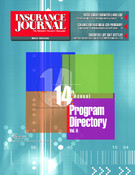California Insurance Code requires property and casualty insurance agencies to receive premiums and return premiums in a fiduciary capacity. Return premium funds must be maintained in a separate trust bank account and refunded to insureds or finance companies without delay. Because of the fiduciary nature of return premiums, producer agencies must maintain complete and accurate accounting records not only for return premiums but also for premium credit and refunds. In current accounting practice, the return premium accounting is practically non-existent. Following is an analysis of current problems with return premium accounting and recommendations for improvement.
Return premium journal entry
In current accounting practice, return premiums are processed as negative receivables. The journal entry for return premiums is opposite to the premium invoice journal entry. It generates negative income in the agency’s profit and loss statement, negative receivables, and negative net premium liabilities in the balance sheet.
For example, Journal Entry 1 (JE 1) (on left) for a $1,000 return premium with a 10 percent sales commission currently creates three accounting records.
This journal entry shapes Balance Sheet (BL) Example A.
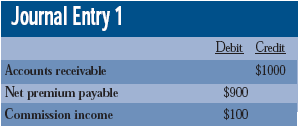
The difference between the first balance sheet (BL 1) before closing and the second balance sheet (BL 2) after closing is the inclusion of $100 retaining earnings, which ensure premium liabilities equal premium assets. Retained earnings, however, are by nature “owner’s equity” that is in the balance sheet of business operating funds to set forth the owners’ claim on that portion of the bank account cash balance representing the period profit or loss. Consequently, there is no justification when reporting return premium funds. There is no “profit” or “loss” in the trust bank account and therefore, a “retained earnings” account is meaningless. Premiums are fiduciary funds in transit requiring no “closing”. The balance of the trust bank account is “premium float,” which continuously changes as premiums are deposited in or disbursed from the trust bank account.
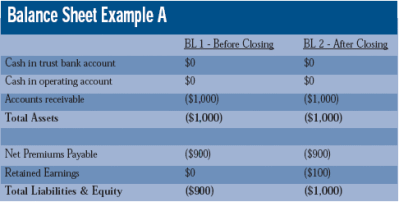
Accounting distortions
Premium assets in a balance sheet must be strictly balanced by premium liabilities. In a return premium transaction, there is a full $1,000 liability to the insured. To honor that liability, there must be $1,000 premium receivable to the trust account, $900 from the insurance company and $100 from the agency operating account. JE 1 makes absolutely no sense in financial terms. It does not represent the return premium process because it does not set out the true premium assets and liabilities of this transaction.
The $900 premium liability reduction does not eliminate the agency’s $1,000 return premium liability to the insured. JE 1 states an agency can resolve a return premium obligation to the insured by reducing the agency’s obligation to the insurance company. That concept is unacceptable in the real world. If someone owes $1,000 to person “A,” he or she cannot extinguish the debt by paying $1,000 to person “B.” JE 1 is an accounting anomaly. It should be discarded and replaced with a true and accurate journal entry.
A return premium never reduces agency receivables. If an agency has a $1,000 invoice in the books, a return premium transaction does not wipe it out. In fact, the return premium transaction adds more receivables to the balance sheet so that the agency can satisfy its $1,000 obligation to the insured. JE 1 is inexplicably used in current practice despite its distorting effect on the agency financial reporting. Balance Sheet Example B (pictured on page 30) helps illustrate this effect.
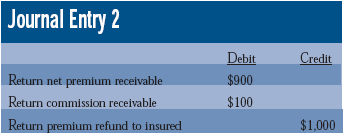
The third balance sheet (BL 3) illustrates a balance sheet following a $1,000 premium invoice transaction of Policy “A.” BL 2 is the balance sheet following journal entry JE 1 of a $1,000 return premium transaction on Policy “B.” A 10 percent commission is assumed for both policies.
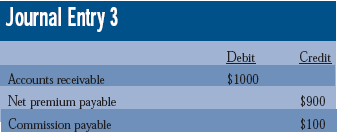
Balance sheet 4 (BL 4) is the resulting balance sheet after combining BL 3 with BL 2. BL 4 strangely shows no economic activity in the agency.
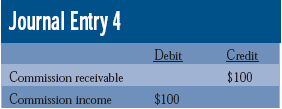
In fact, that agency is waiting for a $1,000 premium payment on Policy “A” and $1,000 return premium assets to be received from the insurance company and operating account so that a $1,000 return premium liability to the insured can be satisfied.
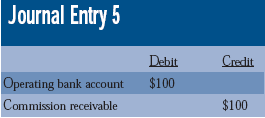
BL 4 represents the state of financial management of return premium funds in the industry. Current accounting practice does not meet insurance code requirements for return premiums and makes it difficult for owners, managers and auditors to assess the financial status of premium funds solvency. Moreover, current accounting practice makes the acquisition process equally difficult because of incomplete and inaccurate financial statements.
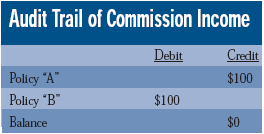
New return premium accounting
A return premium is indicative of premium payments by insured in excess of policy earned premium. That may be the result of three possible transactions: endorsement return premiums (RP); final audit; and policy cancellation.
Return premiums generate two financial transactions. First, trust account “trustees” must refund return premiums to insureds or finance companies. Second, “trustees” must monitor the receipt of return net premiums and return commissions from insurance companies and agency operating account.
Only when return premium reimbursements are made to the trust bank account can “trustees” issue return premium refund checks.
Return premiums also may be used as credit, at insured’s request, to make a down payment or other payments on insured’s other policies.
A different journal entry for return premiums (JE 2) is recommended in lieu of JE 1 (see Journal Entry 2).
JE 2 changes the agency balance sheet to reflect the agency’s true economic activity and provide reliable financial reporting (see Balance Sheet Example C).
BL 3 is the resulting balance sheet of Journal Entry 3 (JE 3 is pictured on page 30) ($1,000 invoice for Policy A), which is different from JE 1. BL 2 is the balance sheet of Policy B following JE 2.
We proposed JE 3 to include in the premium invoice journal entry the “commission payable” account. The “commission payable” account is required by insurance code to enable funds “trustees” to monitor and control the transfer of earned commissions to the agency’s operating account.
BL 4 combines BL 2 with BL 3. BL 4 accurately captures the agency’s true $2,000 premium liabilities and identifies the $2,000 assets required to cover its liabilities.
Income loss accounting
Return premiums cause an agency a loss of commission income. To capture the loss of income, Journal Entry 4 (JE 4) is proposed. JE 4 should be used in parallel with JE 3.
Another journal entry (Journal Entry 5) (pictured on page 32) will be made when the return commission is reimbursed from the operating account to the trust account
An audit trail of the “commission income” account will show the activity pictured in Audit Trail of Commission Income (see page 32).
Two accounting ledgers
Journal entries JE 4 and JE 5 are made in the current ledger of accounts that must remain dedicated solely to business operating funds. Journal entries JE 2 and JE 3 must be made in a separate ledger of accounts reserved for premium funds. The need for a separate ledger of accounts is also required by premium invoice accounting, which mandates a “commission payable” account. The case for a commission payable account was made in a previous article in this series. (See Insurance Journal West Edition’s Sept. 5, 2005 issue, page 30.)
It is an accounting impossibility to manage premium and return premium funds using a single ledger of accounts. As proved by current accounting practice, a single ledger of accounts obfuscates critical liability accounts, such as “commission payable” and “return premium refund” accounts. Trust account management is management of insurance agency premium liabilities. There cannot be trust account management without premium liability accounts in the ledger. Placing those accounts in the current ledger causes serious distortions in the agency’s financial reporting.
Financial controls
Financial controls in return premium accounting are mandated by insurance code to prevent mismanagement. Currently, insurance agencies can monitor and control disbursements of net premiums to insurance carriers. They are unable to do the same with commission funds transfers and return premium refunds.
Three changes are proposed in current return premium accounting:
1. Replace current return premium JE 1 with JE 2;
2. Separate return premium funds into a different ledger of accounts reserved for premium and return premium funds only;
3) Add a new journal entry JE 4for commission income loss to be used in parallel with JE 3.
Final thoughts
Current return premium accounting is standard in all accounting software products distributed with current agency management systems. Agencies using manual accounting follow the lead of automated agencies. The trust account process is not only different but significantly more complex than the agency’s core business process. New accounting procedures are needed to support the intricate reporting and financial solvency requirements in insurance industry practice.
Insurance code places important fiduciary obligations many on insurance producers may not be fully aware of. In the process of transacting insurance, producers become legal “trustees” of premium and return premium funds. Without adequate financial tools, however, the “trustees” cannot fulfill their fiduciary obligations.
This article is published to foster a public debate on the subject and promote changes in current return premium accounting. Premium “trustees”, producers, managers and auditors will largely benefit from such changes.
Chris Marinescu is president and CEO of Paulmar Software Inc., a Southern California firm specializing in insurance premium accounting and solvency management. E-mail: chrism@paulmarsoftware.com. Emma Hart is an insurance professional with more than 15 years experience in the management of insurance trust account.
Topics Agencies Profit Loss
Was this article valuable?
Here are more articles you may enjoy.


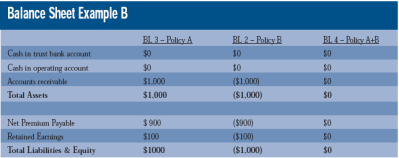
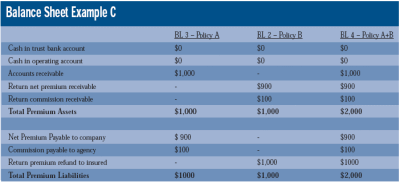
 Litigation Funding, Other New Laws in SE States Could Impact Liability Insurance
Litigation Funding, Other New Laws in SE States Could Impact Liability Insurance  Private Equity Firms Expected to Unleash Middle-Market M&A Deals, Survey Says
Private Equity Firms Expected to Unleash Middle-Market M&A Deals, Survey Says  Relief But Questions on Agents’ Duties to Insureds After Florida Court Ruling
Relief But Questions on Agents’ Duties to Insureds After Florida Court Ruling  High-Net-Worth Risk Appetite Drops as Some Regions Show Stabilization
High-Net-Worth Risk Appetite Drops as Some Regions Show Stabilization 